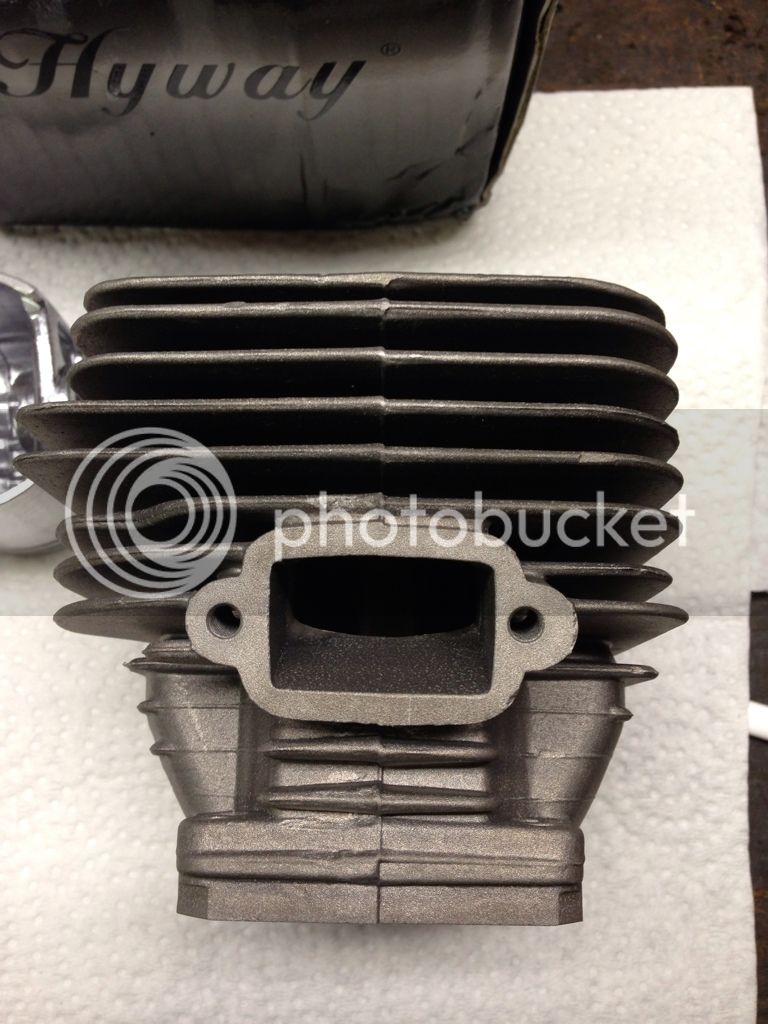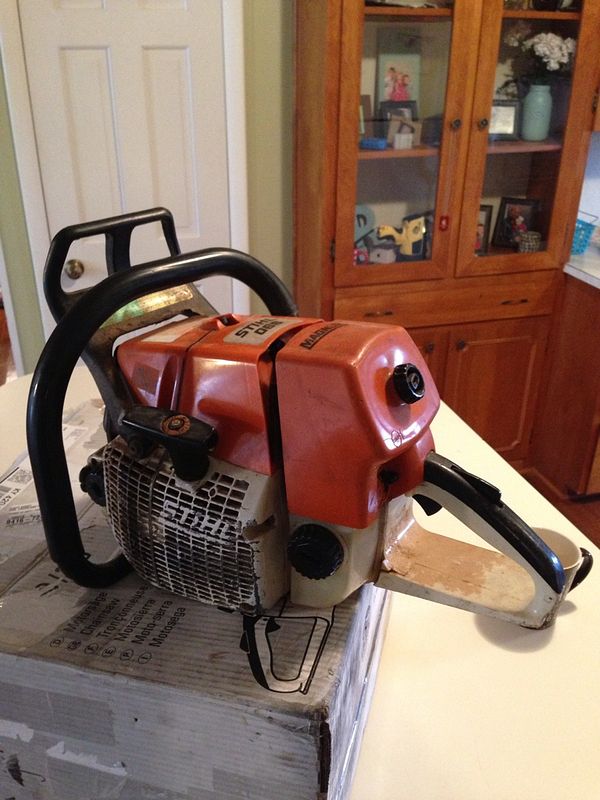On the 029-039's was the plating worn or did the casting shift, causing the bore to no longer be concentric?
In general I would say between the two choices above it would be plating worn by a very large margin and then what I think you are calling casting shift, what I refered to as being the out of shape, with both those choices trailing way way behing lean damage. This is where someone with a better understanding of cylinders than me will hopefully step in.
That being said I did pick up some used cylinders today.....
Typically on the 1127s it is damage caused by being run to lean. All 6 of the 1127 cylinders I got today that is the case.
One of those cylinders has the plating worn through on the intake side top and bottom and above the exhaust port.
None have any detectable ring ridge. I use a fine wire dental pick, it works very well.
I did not get the pistons with these cylinders but I would suspect that they were fairly low hour saws and the pistons would have very little transfer port imprint on them and that 5 of the pistons would still have fairly even thick piston skirts.
The piston that went with the cylinder with the worn through plating was probably fairly thin on the intake and exhaust skirts but judging by the color of the bore on the transfer partitions it was not a high hour saw just a horribly maintained one.
The cylinders that have the pistons with the really deep side imprints, the super thin exhaust side skirts and super thinned rings are the ones that really need to be measured/tested before slapping a new piston in them. These will typically have a fairly strong imprint of the piston travel on the bore as well as the piston. Not just a "carbon" print but actual clean it up with a ScotchBrite pad and it will look good but can still feel a ridge with a pick imprint. This is what I think you are refering to as casting shift. If that is correct, I see very few of those compared to lean damage or worn plating. One thing about cylinders in this condition, even if they look very clean and the plating looks very good if they are treated with acid a lot more holes will show up than with a cylinder with much less use.
I have had a few cylinders where the transition from the bore wall to the roof seems to have increased with wear to the point of not being useable, ring snag. However it was accomplished I feel that those were caused by poor quality control(bad machining/poor plating) and do not include them as a bore with a use induce ring ridge.
Todays 1127 numbers would be:
6@1127 cylinders
6 lean damage
1 plating worn through, finished off with exhaust side piston alum transfer, alot of it.
0 casting shift
Todays total haul was fairly small so not much 1127s stuff was included. This is a good thing.






